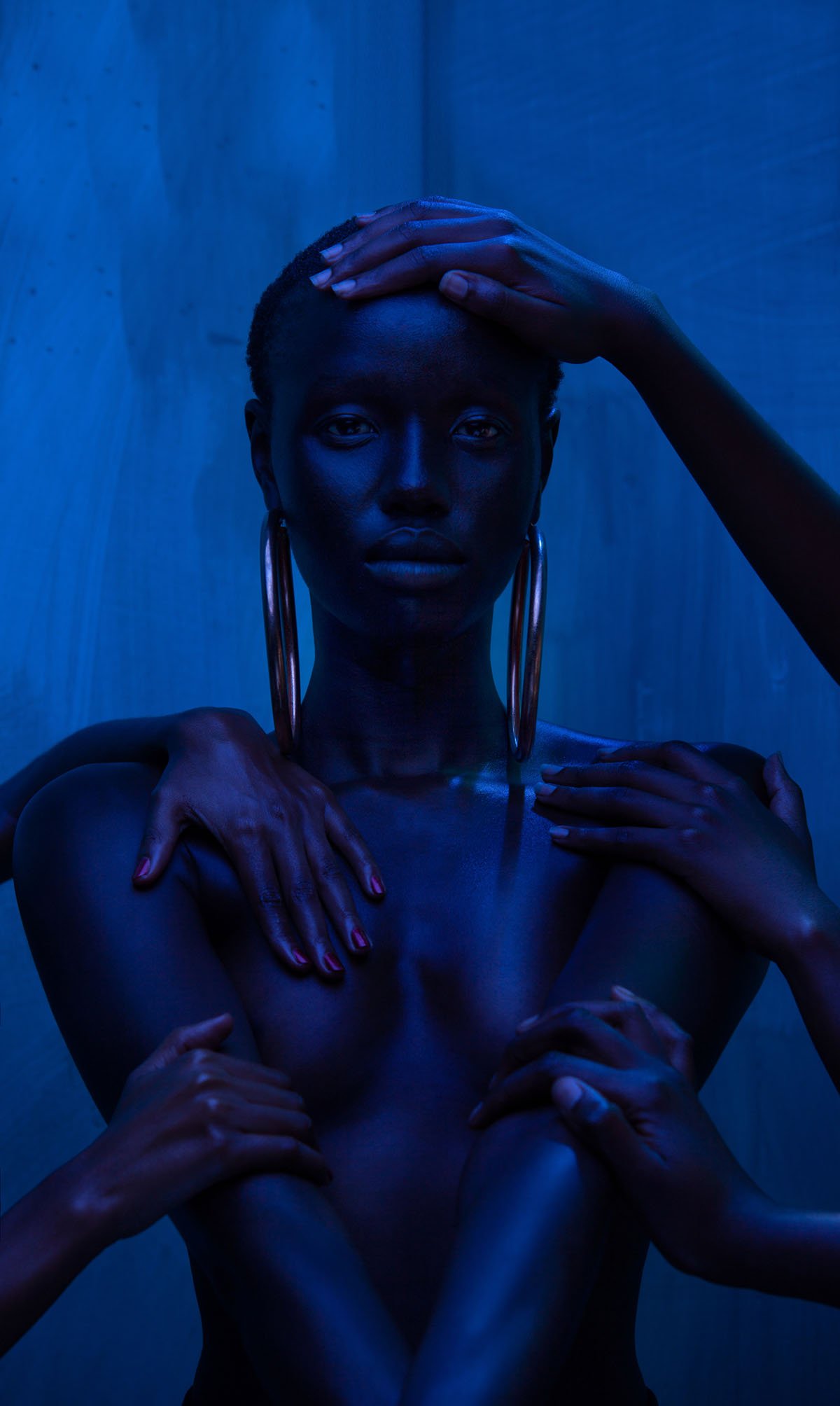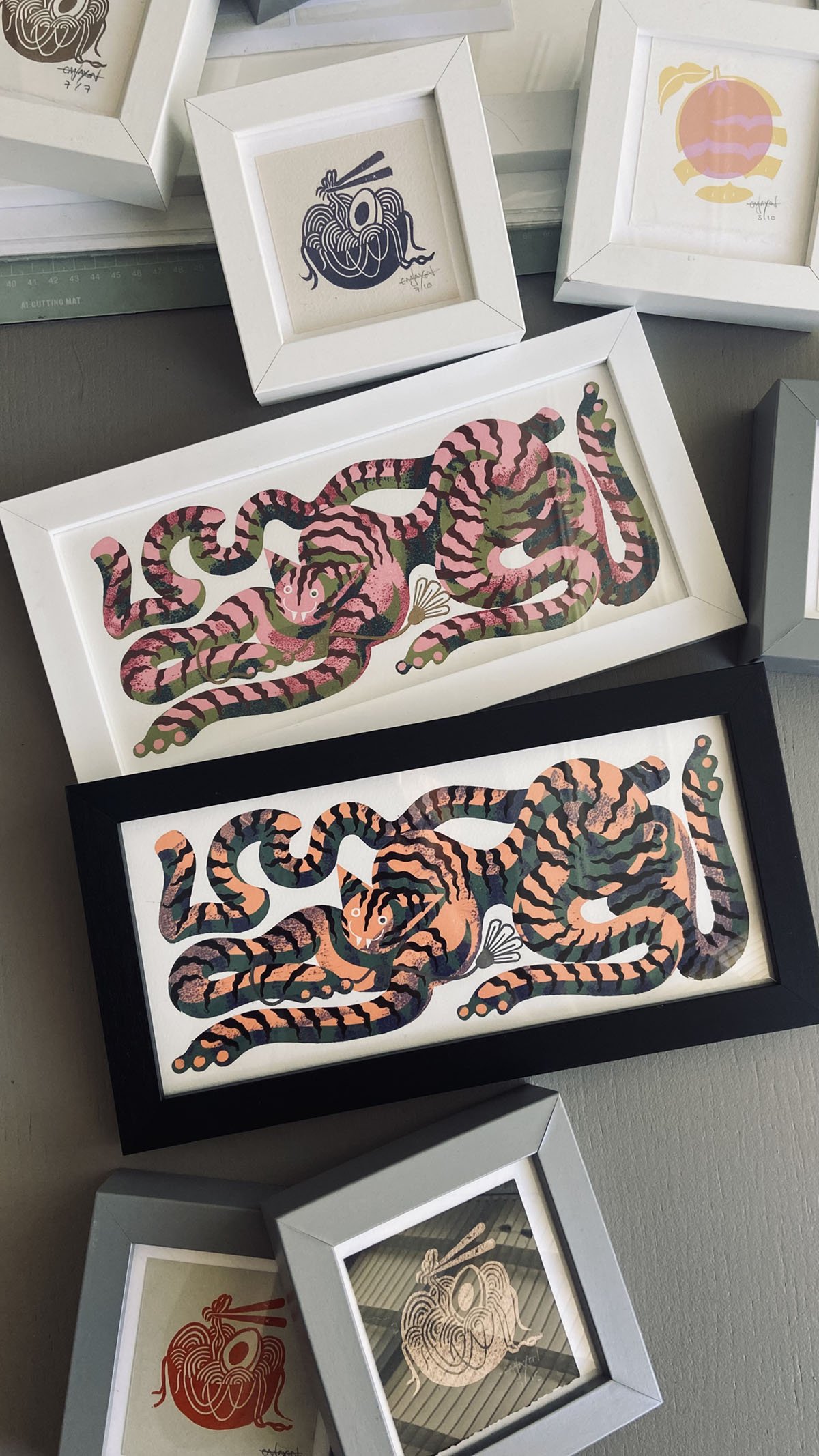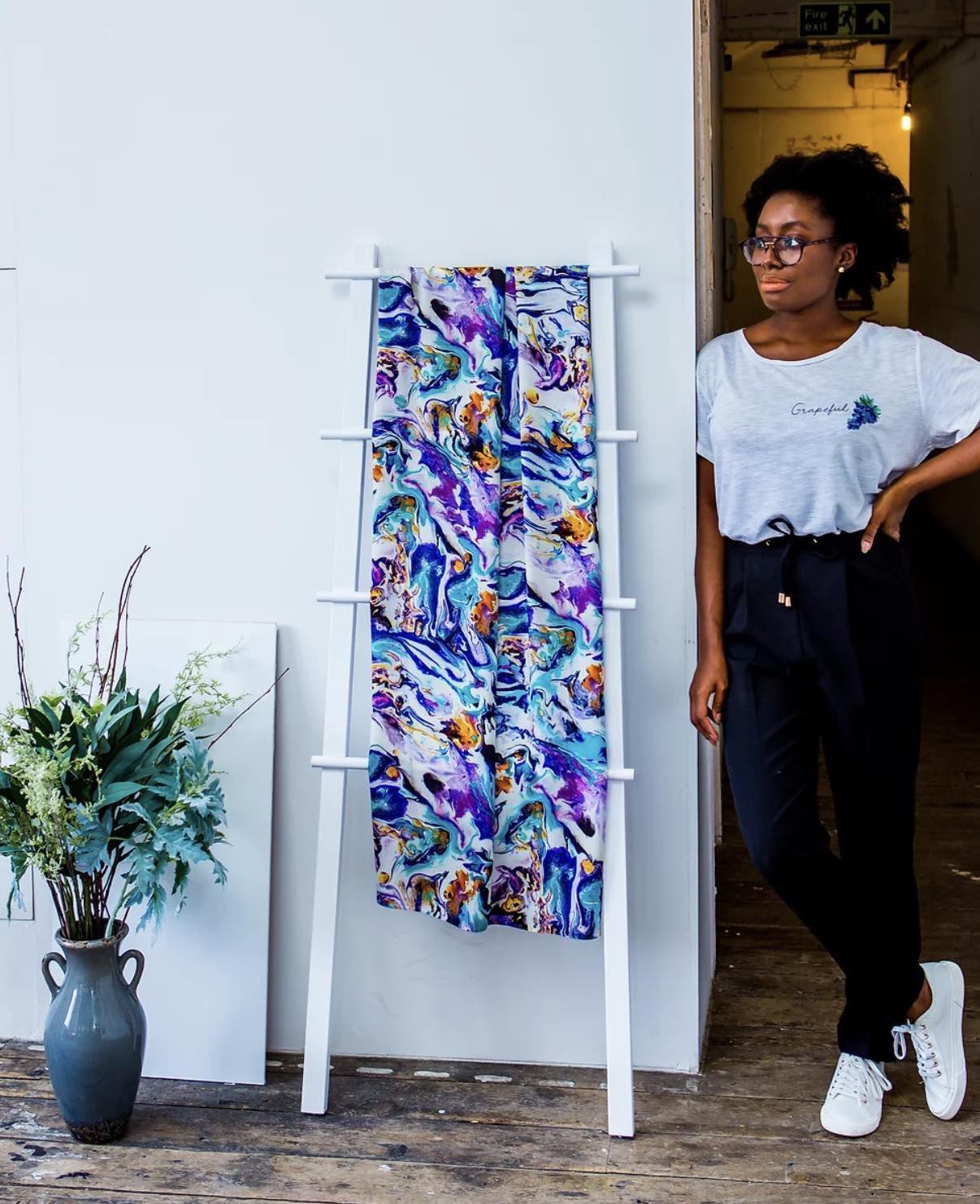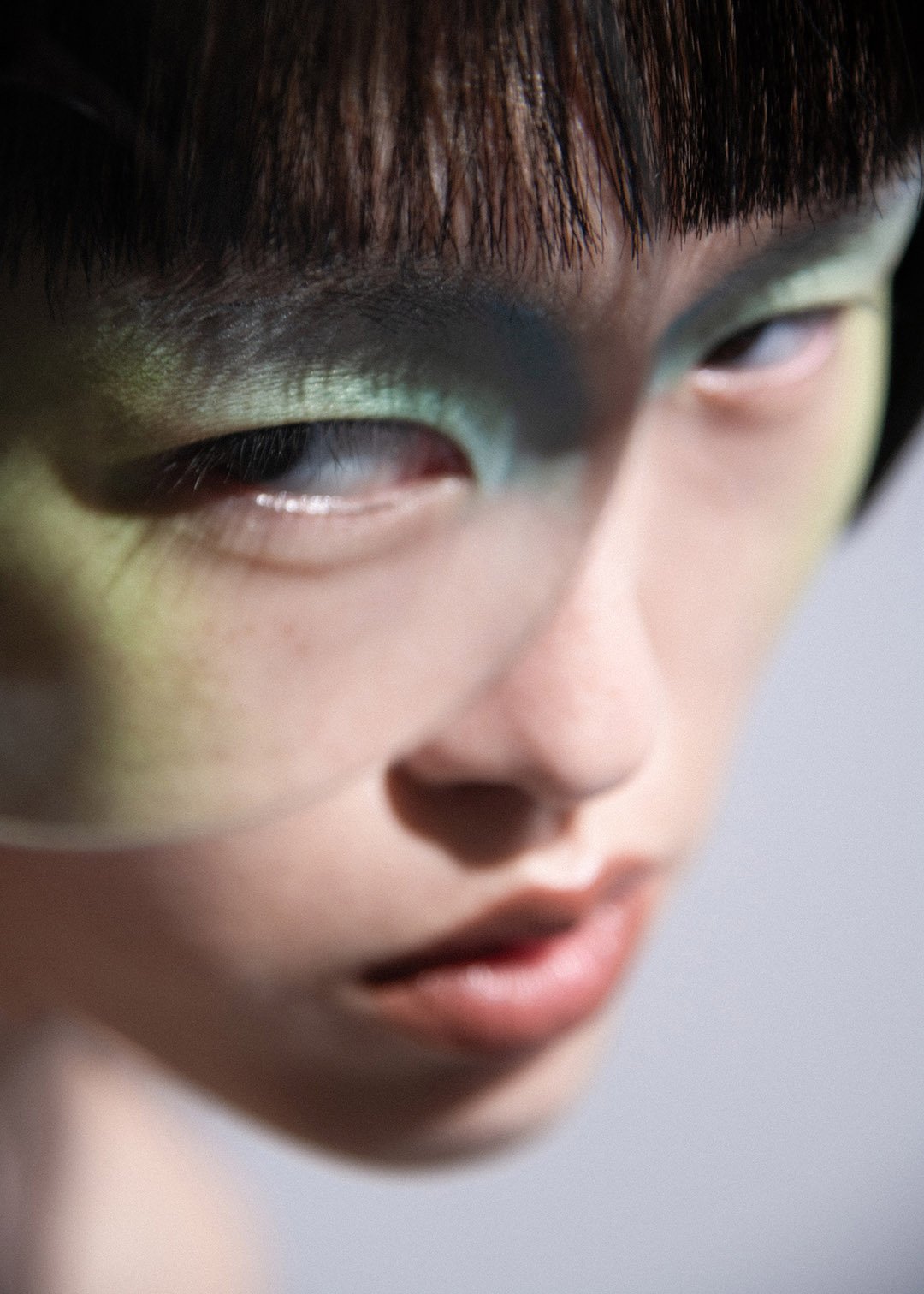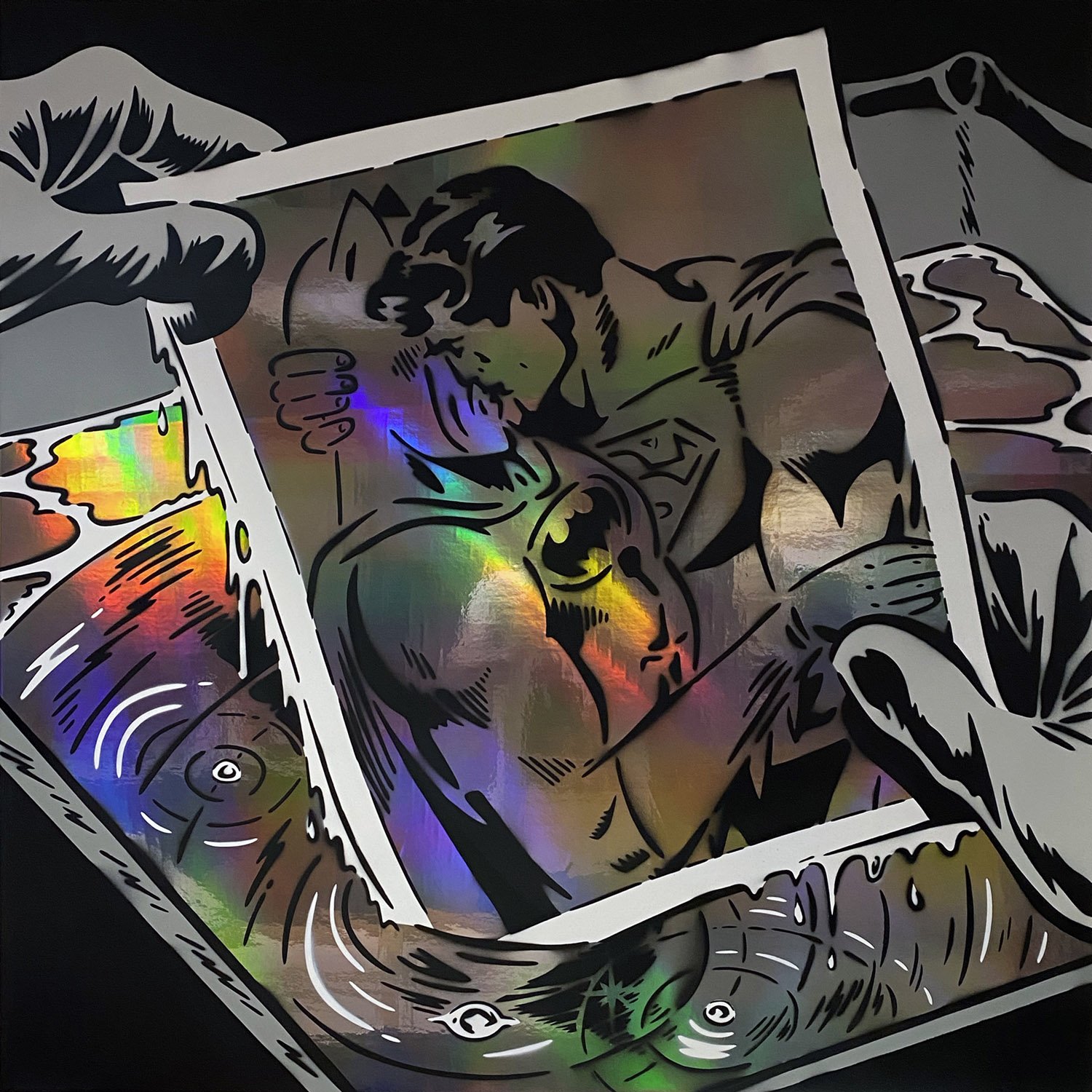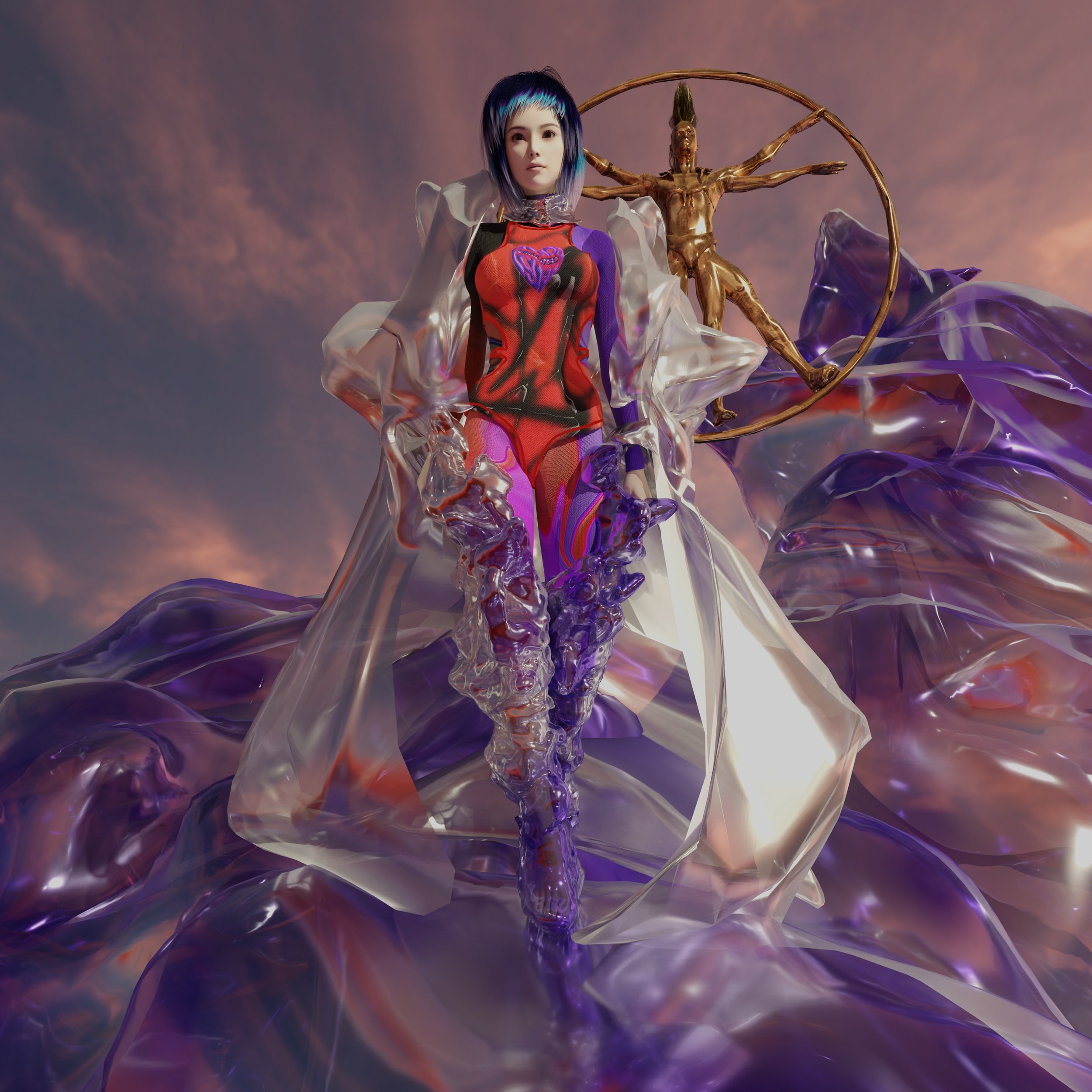How to find your voice as an emerging creative
About
We caught up with Aaron McCauley of TLD&Friends – a designer-led agency offering career coaching support for creatives – to find out about growing and nurturing an emerging career in industry. Discover Aaron’s experience, and keep on reading to reveal key tips to becoming a successful and adaptable industry creative.
Share this article
Hi Aaron, tell us more about your journey into design, and where you’re at now.
I grew up, studied and began my design career in Belfast, Northern Ireland. My first experience with design came in secondary school, when I took a technical drawing class (although it was focused more towards architecture). I stayed on at school to do A-levels and quickly realised I had zero interest in any of the subjects I had chosen, so I decided to drop out and attend a graphic design course in college (inspired by how much I enjoyed the technical drawing class). After two years in college I went on to study graphic design and illustration at Ulster University for 4 years.
Post-graduation I worked at a local design studio called Sort Design for 4 years before moving abroad to Bond Design Agency in Dubai for a year and a half. Those two experiences gave me a taste of what it was like working in small studio with local clients vs large agency with global brands.
My mindset has shifted in the past few years, I used to dream of running a physical design studio but as the years go by I realise that’s not what I want. I’ve come to value my time a lot more and full-time employment taught me that I want more control over what work I do and who I work with. So, in January 2023 I decided to set up as an independent designer.
And that leads me to where I am now. I focus on helping founders launch their businesses through brand strategy and brand identity design. I also still take on freelance projects with other design studios when the opportunities arise because I want to stay in the loop with what others are doing and it allows me to continue to grow and develop. I also run an online community called TLD&Friends which supports emerging creatives in the design industry.
How have you noticed the design industry change since you first joined it?
The most obvious one is advancements in technology. I’ve experienced the handcrafted side of design, and now I’m going into this new digital era of design where everything needs to be moving and constantly evolving.
And as our technology gets better, the more accessible the creative industry gets, and the more popular it becomes. When I first began, no one really knew what a graphic designer was, but now with the rise of content creators/influencers, etc., there are suddenly a lot more graphic designers in the world. It has almost become ‘cool’.
Which I don’t see as a bad thing, I think it's amazing that the creative industry is becoming more accessible because I believe everyone has some form of creativity within them, even the ones who don’t think they do.
But I do think we need to be more specific about the things we do. I’ve noticed more and more creatives, such as artists, illustrators, and even animators labeling themselves as a graphic designer, and so when you look at this from a client or business perspective, they start to see a graphic designer as this all-in-one creative that can do a bit of everything, which isn’t true for the majority of us.
And I think that’s why we are starting to see more niche job titles, like Presentation Designer or Brand Designer, because the graphic design title has become so saturated over time.
“The creative industry is becoming more accessible because everyone has some form of creativity within them (even the ones who don’t think they do).”
What are some of the bigger barriers to entry you think new designers face nowadays?
I’ll name a few but the biggest for me is that employers are expecting too much. I recently saw a job advert for a junior designer and they were asking for 3 YEARS EXPERIENCE. For someone who has just come out of university, it's almost impossible, maybe you’ll have 1 due to doing a placement year but 3 is ludicrous.
I mentioned job titles before... Employers nowadays are looking for a Graphic Designer who can animate, illustrate, build websites, create videos and shoot photography. They’re expecting one person to be the WHOLE CREATIVE TEAM. It's insane.
The last thing I would say is thinking you're prepared. Whether or not you come through education or you learn design through YouTube, you are not prepared to work in the industry. I think education is massively important and it needs to be adapted to suit real life needs, not just in design but education in general. At the moment there’s a huge gap between education and studio life. Junior creatives need to be given real insights into the industry and the challenges that they’ll face (another reason I set up TLD&Friends).
“Employers nowadays are looking for a Graphic Designer who can animate, illustrate, build websites, create videos and shoot photography. They’re expecting one person to be the whole creative team. It's insane.”
If you could only choose one, what would be the most valuable asset or trait for a designer to possess?
I’m going to mention two because I think they go hand-in-hand, resilience & persistence. As a creative, you will constantly get rejected, no matter what stage you’re at. You’ll be told that creative careers don’t matter and to stop wasting your time. Potential clients or employers won’t respond to your emails and your work will get criticised over and over again but if you keep showing up for yourself and working towards your goals, you’ll achieve everything you’ve ever wanted and I truly believe that.
Persistence beats skill every damn time.
How relevant is authentic personal branding today – on social media and beyond?
Huge! Being fake doesn’t float with the new generations, they’ll turn down job interviews if they get a bad vibe from the employer or they’ll boycott a particular store if they do something that goes against their values.
I’ve worked in brand long enough to know how much Photoshop is involved in fashion shoots or food campaigns (I’ve witnessed someone using a wallpaper steamer to make a burger look more juicy). I’ve also witnessed how this type of advertising can have a negative impact on people’s wellbeing (especially women). But nowadays people want more genuine connections with the people they work with and the brands they support, which is exactly how it should be.
It’s also the only thing that separates you from another creative in the same field. Say a client has the choice of 5 designers and all the work is at an extremely high level, who do you choose? The one you vibe with the most, right? You choose their personality and professionalism.
tell us about TLD&Friends – why you started it, what you do, and what your future ambitions are.
It all began from the frustration of seeing emerging creatives not getting enough support, both during education and as they enter the real world. Many of us leave school thinking we're ready to conquer the world, only to realise we know very little when we land a full-time job.
This lack of preparation can make creatives feel useless, then imposter syndrome and self-blame start to creep in. Being a creative is already mentally challenging without adding more pressures that could easily be avoided. This can be done by tweaking the way in which we educate the younger generation because If they are better informed on what’s coming next, they’ll be more prepared.
TLD&Friends offers one-on-one support, events, and online workshops to empower creatives with the necessary knowledge. It’s currently a one-person show (me lol!), which can be overwhelming sometimes, especially while managing the design side of the business too. The aim is to open the platform for other creatives to volunteer or sell their courses/resources alongside the work I currently do. If one person can have an impact, then imagine what multiple people could do...
If I look to the future, I would love to do group sessions and maybe organise design retreats abroad. As someone who has had the privilege of being able to visit different countries, I know how important it is for creatives to see and understand different cultures, and to form different perspectives on life. And who knows maybe there’s a TLD&Friends design festival somewhere in the future too?
But right now I’m focused on doing what I have to do to support as many people as I possibly can and if any of those opportunities come my way, I’ll welcome them with open arms. ✺
“I know how important it is for creatives to see and understand different cultures, and to form different perspectives on life.”
Top tips: Prompt cards
5 tips for… improving your chances at a job interview
Be Yourself. Don’t pretend to be someone else because you think it might impress them more.
Know who you’re chatting with. Do some research on who the interviewer is, and get to know them before you meet them in person.
Ask questions. Employers do interviews to see if you’re the right fit for them but you also need to figure out if they are the right fit for you.
Be honest. You don’t need to tell them you’re amazing at everything, a creative who can recognise their current skill level and has a drive to be better is far more attractive than a know-it-all.
Be prepared. Bring whatever you need to show off your skills/who you are.
5 tips on… becoming more adaptable to rapidly changing trends
Constantly challenge yourself. Allocate time each week to read up on the latest trends or learn a new skill. Start small!
Embrace change. It's important to never get attached to a singular way of working because you’ll end up getting left behind as the world evolves.
Grow your network. Attend events, connect with creatives digitally or IRL and collaborate!
Experiment with new technologies. AI is here whether you want to acknowledge it or not but don’t be afraid of it, learn how to utilise it in your favour.
Ask questions. Involve yourself in other topics outside of your field.
5 tips on… succeeding at collaboration and growing through partnerships
Make sure both parties benefit. What are you hoping to achieve? Will it help you both? It's not fair if one benefits and the other does not.
Support each other. Successful collaborations don’t always have to end with a final piece of work, it could be the exchange of resources or cheering each other on when things aren’t going so well.
Mutual alignment. Do you both have the same beliefs, are you working towards the same goal?
Does the collab make sense? You wouldn’t see a gym collab with a fast food restaurant would you?
Offer value. Does the collab add value to the consumer’s life?
5 tips for… developing processes or systems for their design thinking project management
Understand your needs. There are tonnes of management resources out there and it's easy to think you need all of them. You don’t, so prioritise what you really need help with.
Ask others. Speak to other creatives doing similar work to you and find out how they work, 9 times out of 10 there will be something you could implement in your own process.
Experiment. Trying different things will narrow down what works best for you.
Keep it simple. Look at it in its simplest form. If it confuses or overwhelms you, then it’s only going to have a negative impact on your creativity/productivity.
Remain flexible. Every project will be different so its good to have a basic foundation but stay open to adapting/evolving your process as you go.
5 tips on… boosting your creativity while looking after your wellbeing
Get outside. Get away from the screen and do something that doesn’t revolve around work. Go for a walk or visit the beach.
Take breaks. I find that when I try to force creativity it always leads to nothing. Taking a walk at lunchtime no matter what the weather is like boosts my creativity for the afternoon.
Nice work environment. If you’re working from home I think it’s important to work from a cafe every once in a while or spruce up your workspace at home so it fills you with good energy.
Stay connected. This can be with friends or other creatives in your industry, it's important to talk about your struggles as much as your achievements.
Audit where you absorb information. Are the news channels or social media profiles you follow contributing to your positive thoughts or negative ones? Get rid of the ones that make you feel bad.
5 tips on… nurturing your creativity as you grow in the industry
Grow your network. Attend talks, workshops & events, IRL & Online.
Learn from those ahead of you. They’ll most likely have gone through the problems you’re facing and will be able to help.
Embrace failure. Be prepared to fail 99 times to reach the 1 success that will change your life.
Constantly challenge yourself. Allocate time each week to read up on the latest trends or learn a new skill. Start small!
Look after your wellbeing. Creativity comes when you're in your best possible state so make sure to not overwork yourself to the point of exhaustion.
What a 1:1 session with TLD&Friends looks like
It starts with a discovery call (30 minutes)) where we chat about the problems you’re facing and what I can do to help. After the call I will write everything down a list of ways I think we could improve those problems and then it's up to you to decide if you want to work with me or not.
If yes, we create a timeframe in which we want to achieve the goals and I build a structured plan with daily tasks for you to complete. Bare in mind every plan is different because I like to work it around your current life situation. The main goal is to set tasks that are achievable and not ones that put you under an insane amount of pressure. As you complete the tasks we will have weekly or monthly check-ins (depending on the timeframe set). You are also put into a Slack group where you will receive daily feedback/support from me along the way.
A sample of what’s included:
An initial 30 min discovery call
Weekly plan with daily tasks
Two 45-minute check-in calls or meet-ups (depending on location) – My daily support/feedback on tasks that I set (via Slack)
Resources/insights to help you along the way
A sample of what’s you might do:
Job research
Build a proposal/portfolio
Refresh your CV
Build a personal brand
Create business templates (invoices etc)












